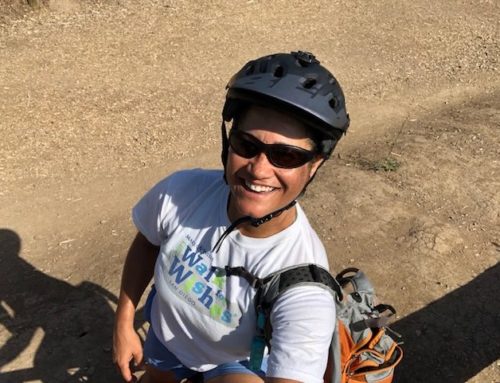Cardiovascular exercise is any exercise that involves an elevated heart rate. Walking, running, swimming, and boxing are all examples of this. This is only one part of a balanced fitness program, however, with the other three parts being flexibility, resistance training, and nutrition. Cardio is what is responsible for burning the fat off of our bodies. Our bodies’ first choice for fuel is carbohydrates, then followed by fat. That means you are more likely to burn stored body fat if you exercise in the morning before you consume a meal. If you find that you are running out of energy without eating, try just nibbling on a small bite to tide you over until after you finish. Also, exercising beyond 30 minutes will increase your chances of burning stored body fat rather than carbohydrates. 40-45 minutes is what I usually recommend for people trying to lose fat.
Many people exercise cardiovascularly, but not at an intense enough level to see much progress. While any exercise is good, it is optimal to exercise at a level that will work your heart and allow you to burn sufficient calories. Contrary to popular belief, exercising at a low level is not better for burning fat, however, exercising for an extended period of time is. In other words, don’t be afraid to get your heart rate up-the more intense the exercise, the more calories you will burn provided you maintain the pace for the appropriate amount of time. In other words, if two subjects are genetically identical, and subject A jogs for 45 minutes while subject B walks for 45 minutes, subject A will burn more calories (including fat calories) than subject B. Of course, these guidelines only apply if you are healthy and illness free, and you should build up to this. Start out doing maybe 10 or 15 minutes, and use intervals if you need to. Meaning, if you can’t remain in your training zone for the entire length of time, walk or slow down until you get your wind back. You should always consult your physician before beginning any exercise program.
As a standard, I calculate a healthy person’s training zone based on 60-75% of their maximum heart rate. If someone is over 55, just recovering from an injury, obese, or just in poor physical condition, I use the 50-65% range to determine the training zone. And if a person is a competing athlete, I generally use the 70-85% range. Once you determine what category you fit into, simply apply the Karvonan formula to give you the number of beats per minute you should maintain.
Start by taking your resting pulse from your carotid artery in your neck first thing in the morning before getting out of bed. Just count the number of heartbeats you have in a one-minute time frame. Then apply the Karvonan formula which is: 220 minus your age minus your resting pulse, then multiplied by the lower percentage of the training zone you fit into, plus your resting pulse. This will give you the low end of your heart rate training zone. You then do the same thing again, but substitute the high percentage into the formula to determine the high end of your training zone. The following is an example for a healthy 30-year-female with a resting pulse of 70.
For the lower end of the training zone: 220 – 30 – 70 = 120
120 x .60 = 72 + 70 = 142
For the upper end of the training zone: 220 – 30 – 70 = 120
120 x .75 = 90 + 70 = 160
So the training zone for a healthy 30-year-old female with a resting pulse of 30 is 142 – 160 beats per minute. That means that in order to burn the maximum amount of calories, she needs to stay within this training zone throughout her exercise. Of course, you should always warm up for at least 5 minutes prior to moving into your zone, and you should finish with a cool down of at least 5 minutes to bring your heart rate back down. Stretching should then follow, and if need be, you can stretch after your warm up before moving into your zone.
Hopefully this has shed some light onto how to determine your intensity level for cardiovascular exercise. The key points are listed below to summarize.
* Try exercising in the morning before consuming a meal
* Exercise 40-45 minutes to burn fat
* Calculate your cardiovascular training zone using the Karvonan formula above
* Use progression when first beginning an exercise program
* Check with your physician before starting an exercise program
So give this a try and monitor your progress over a period of about eight weeks in order to see what you have accomplished. Remember, you can do anything you set your mind to!
Copyright © 2010 Optimum Condition. All rights reserved. Melissa Allen, CPT, BS, CES is a certified personal trainer, corrective exercise specialist and Medifast health coach, is the owner of the Optimum Condition Corrective Exercise & Performance Center, located in El Cajon, in the East County of San Diego. We specialize in customized fitness training & corrective exercise for both recreational athletes and post-rehab clients, as well as guaranteed weight loss programs or your money back. You can schedule a free consultation to help you get started. Please visit her website at OptimumCondition.org.





